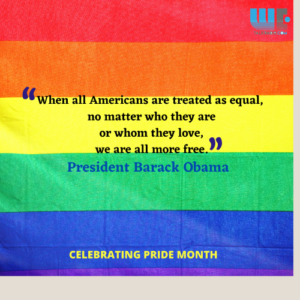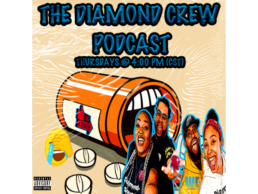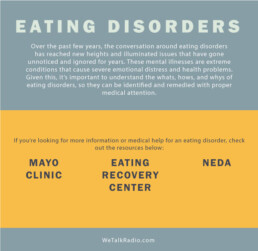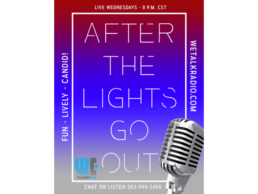Motherhood and depression
I believed for nine whole years that I am not a good enough mom. I kept telling myself repeatedly that being a stay-at-home mom may not be the best thing for me, but it is best for my family, for my child. I must be able to stay happy with this job, or what would others especially my husband thinks of me. Still, I could not help burying that deep-down desire of having some individual identity of my own as well outside of motherhood. A mom friend of mine used to wake up crying every morning and always thought that she was just having a bad day. She tried medications and communicating. She finally saw a therapist and joined a school to dig herself out of the darkness.
Like me or my friend, too many American women experience emotional crises as they navigate motherhood. Hormones are often considered the key reason for compromised mental health in moms, most of the challenges come from society’s gender expectations and responses to motherhood. Following are key reasons responsible for impacting the mental health of new or old mothers.
Sleep deprivation
Lack of sleep is the second name for motherhood, and moms contended with the years of interrupted sleep. The fact that no one wants to acknowledge that they are exhausted. This certainly leads to mental health issues, anxiety, depression, and low self-esteem.
Mom guilt
Believe it not, moms are the most judged by society, by themselves. This guilt starts in pregnancy and grows only worse as family, in-laws, partners keep finding out flaws in mothers. Anything that goes awry with the child, mothers are to be blamed. Moms are susceptible to feeling guilty all the time because they want to believe that they are the chief architects of their children’s lives.
Work-life balance
I read it somewhere that women are supposed to work as if they don’t have to mother, and they are supposed to mother as if they don’t have a career. These clashing and contradicting expectations take a psychological toll on women as millions of working moms sacrifice to balance each day. And whatever they miss, adds only to their guilt stock.
Discrimination at work
Women often face unequal pay or treatment. Work-life balancing already takes a toll, then mansplaining, and barriers to upward mobility create further mental health issues. Most organizational cultures reward men out of proportion, and this can be very subtle and hence difficult to fight.
Those stretch marks and that unfit body
Body shaming is another challenge that moms face. Instagram is full of pictures of celebrity moms stunningly fit and without stretch marks. The whole world tells them with a grin - if they can, why cannot you! This whole scenario contributes to a lack of self-worth, self-loathing, and eating disorders.
Domestic violence and abuse
A significant number of moms face domestic violence, and financial, sexual, and emotional abuse every single day. Even if they decide to leave a toxic relationship, the psychological trauma lingers, and they may be easily triggered.
Single motherhood
Millions of American children are currently being raised by single mothers. Most single mothers accept sleep deprivation, stigma, conflict with an ex, and financial insecurity as a part of the deal. Minimum wage keeps many single moms below the poverty line – even if they are working full time! These hardships often trigger anxiety and depression. Single moms are doing a great job but at the cost of their mental health.
and depression
The History of the Pride Month
Celebrating LGBTQ Community
It comes across as a moving question – did you choose your sexuality? If not, then why to object on others. The gay rights movement has seen genuine progress and change in the last century across the world, especially in the United States. Pride Month celebrates commemorates the struggles, the sacrifices created awareness of the deep-seated prejudices, problems, and inspired people to bring out the significant change.
The Stonewall uprising
Throughout history, periods of upheaval moments have often given birth to genuine progress and change, but the Stonewall incident or Stonewall Uprising proved to be the catalyst for achieving the “pride” in the movement.
A series of violent confrontations started on June 28, 1969, between police and gay rights activists outside the Stonewall Inn, a gay bar in the Greenwich Village in New York City. As the riots continued, an international gay rights movement was born.
Before 1969, homosexuality or solicitation of homosexual relations was an illegal act in New York. Gay men, lesbians, and other individuals who were considered “suspects” were not allowed to mingle freely, so the bars were the only haven for them.
On June 28, people in and outside the bar did not retreat or disperse as they always did in the past. On this evening, however, the bar patrons fought back. It started when Marsha P. Johnson cried “I got my civil rights!” and threw a shot glass into a mirror (now known as "the Shot Glass that was Heard Around the World").
People started throwing bottles and debris and pushing the policemen. This was spontaneous united action by 400 people who fearlessly breached police barricades and set the bar on fire.
The crowd was scattered eventually. The riots outside the Stonewall Inn waxed and waned for the next five days. There have been many other protests by gay groups but the Stonewall Incident was the first time when the LGBTQ community witnessed the power of unity for a common cause.
Stonewall: the symbol of resistance
What happened at Stonewall bar was the first, but this incident became the symbol of solidarity among the LGBTQ community and sparked a new fire of activism for the new generation.
Older groups such as the Mattachine Society, which was founded in southern California as a discussion group for gay men and had flourished in the 1950s, soon made way for more radical groups such as the Gay Liberation Front (GLF) and the Gay Activists Alliance (GAA).
In addition to launching numerous public demonstrations to protest the lack of civil rights for gay individuals, these organizations often resorted to such tactics as public confrontations with political officials and the disruption of public meetings to challenge and to change the mores of the times. Acceptance and respect from the establishment were no longer being humbly requested but angrily and righteously demanded. The broad-based radical activism of many gay men and lesbians in the 1970s eventually set into motion a new, nondiscriminatory trend in government policies and helped educate society regarding this significant minority.
How Pride month started
A bisexual activist Brenda Howard, who was known as “the Mother of Pride” organized Gay Pride Week and the Christopher Street Liberation Day Parade a year after the Stonewall Riots. This turned into the New York City Pride March and became the catalytic event for similar parades and protests worldwide.
A talented designer Gilbert Baker designed an all-encompassing flag on the request of a gay politician Harvey Milk to be presented in the Pride March in 1978 in San Francisco.
President Bill Clinton was the first to officially recognize Pride Month in 1999 and 2000. Then, from 2009 to 2016, President Barack Obama declared June LGBT Pride Month. In May 2019, President Donald Trump recognized Pride Month with a tweet announcing that his administrati on had launched a global campaign to decriminalize homosexuality.
on had launched a global campaign to decriminalize homosexuality.
Eating Disorders and Triggers 2021
Eating Disorders and Triggers
7/7/2021
By: Geoffrey McMain
Edited by: Kaitlin Graham
Over the past few years, the conversation around eating disorders has reached new heights and illuminated issues that have gone unnoticed and ignored for years. These mental illnesses are extreme conditions that cause severe emotional distress and health problems.
Given this, it’s important to understand the whats, hows, and whys of eating disorders, so they can be identified and remedied with proper medical attention. Scientists believe that there are a multitude of potential factors that can trigger an eating disorder, whether it be biological or sociocultural.
One potential cause identified is genetics, with research showing that twins have similar likelihoods of developing eating disorders, and there is also evidence of certain brain structures being more or less susceptible to these disorders.
Another possible factor is culture, as nations that idolize thinness typically have much higher rates of certain syndromes compared to those that lack such beauty standards.
Even certain personality traits such as neuroticism, impulsivity, and perfectionism can be potential triggers. While no single cause for eating disorders has been found, it’s likely that a combination of these influences is what triggers the development of one.
Eating disorders can take many forms, and even within specific disorders there can be considerable differences from person to person, which means it’s especially important to understand the most common varieties of these illnesses.
Anorexia Nervosa
Anorexia Nervosa is characterized, like the majority of eating disorders, by abnormally low body weight and a twisted perception of body size that leads to a fierce fear of gaining any weight. People with Anorexia will typically go to extreme lengths to keep from gaining weight and might limit their food intake by forced vomiting, abusing drugs, or exercising excessively.
Bulimia Nervosa
Bulimia, similar to Anorexia, is rooted in a false idea of weight where self-value is based on body size and shape. What differentiates Bulimia from other disorders like Anorexia is a cycle of binge eating, wherein people lose control over how much they eat, and consume a large number of calories in a short period of time. Then food is purged from the system by self-induced vomiting or by abusing diuretics and enemas.
Binge Eating Disorder
Binge Eating Disorder is attached to a loss of control when eating, which often leads to binge eating excessive quantities of food repeatedly. Binge Eating Disorder is usually related to cases of obesity, severe weight cycling, and diabetes, as well as other medical problems.
Pica
People with Pica will compulsively eat foods without nutrition or that are dangerous, such as ice, paint, plastic, or metal. While Pica is usually a harmless and temporary disorder that can take place in children and pregnant women, Pica can also be extremely unhealthy if it lasts for an extended period of time or involves consuming dangerous substances.
Avoidant Restrictive Food Intake Disorder
Avoidant Restrictive Food Intake Disorder (ARFID) is much like other disorders that limit both the amount and type of food eaten, but ARFID differs in that there is no underlying emotional problem involving perceptions of weight. Instead, ARFID is an extreme form of “picky eating” usually found temporarily in children, but can become a problem for adults who do not consume a healthy amount of calories.
Rumination Disorder
Rumination Disorder is an unconscious syndrome where food is typically eaten in a normal fashion and quantity but will be regurgitated undigested shortly after. While experts know that Rumination Disorder isn’t a voluntary act, they also believe that it can be a learned habit by those with it, and can cause a lack of nutrition.
If you’re looking for more information or medical help for an eating disorder, these are some qualified sources:
The Kia D Unplugged Show feat. the Hot Topic Panel
The Kia D Unplugged Show feat. the Hot Topic Panel










